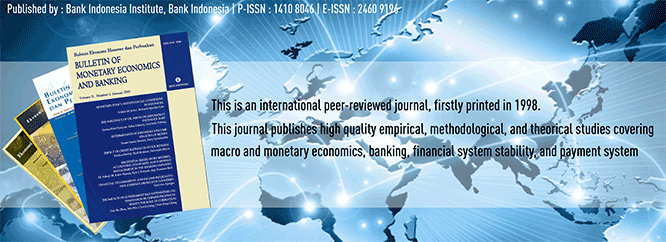
Document Type
Article
Abstract
This paper investigates the long-run and short-run impacts of the exchange rate volatility onIndonesia’s real exports to its major trading partners; Japan and US. The study uses monthly data from January 1998 to October 2015 in order to capture the structural break period of the Global Financial Crisis 2008. In addition, commodity price is included as an explanatory variable. The index of exchange rate volatility is generated using moving sample standard deviation of the growth of the real exchange rate. This paper estimates the long-run cointegration using Autoregressive Distributed Lag (ARDL) bounds testing, while for the short-run dynamic this paper use error-correction-model (ECM). The findings suggest rupiah volatility against the Japanese yen reduces Indonesia’s export to Japan, both in the short and the long-run. Fluctuation of rupiah against the US dollar helps Indonesia’s export to the US in the short run, but the impact is not carried out to the long-run. On the other hand, the impact of commodity price shock is negligible, except for the long-run export to Japan.
Recommended Citation
Fitrianti, Shinta
(2017)
"THE EXCHANGE RATE VOLATILITY AND EXPORT PERFORMANCE: THE CASE OF INDONESIA'S EXPORTS TO JAPAN AND THE US,"
Bulletin of Monetary Economics and Banking: Vol. 20:
No.
1, Article 3.
DOI: https://doi.org/10.21098/bemp.v20i1.724
Available at:
https://bulletin.bmeb-bi.org/bmeb/vol20/iss1/3
First Page
49
Last Page
70
Creative Commons License

This work is licensed under a Creative Commons Attribution-NonCommercial 4.0 International License
Country
Indonesia
Affiliation
Bank Indonesia







